He was given many nicknames over the years: Yster Bester, the Iron Man, Ultraman and Comrade Nick. But one thing is for sure – Nick Bester’s name is synonymous with some of the toughest athletic challenges. It’s a name that will go down in the record books as one of South Africa’s top all-round athletes, a man who won the Comrades Marathon, the gruelling Ultraman and many other ultra endurance races, often only weeks apart.
Time and age have not slowed Nick Bester down. This is the first thing you notice when you see him in his Pretoria office, the base from which he manages the Nedbank Running Club and also runs his own business importing houseware products. He will turn 50 in July this year, but his body is still hard as iron, his skin golden brown from the many hours spent training and participating outdoors.
Nowadays he still cycles three hours every morning, and in the afternoons he runs before going to gym. As we sit down to chat, he passionately talks about that morning’s ride just hours before our interview, and that the evening has been reserved for a run with his daughter followed by a gym session.
He has clearly not slowed down, and his passion for sport still burns as bright as it did all those years ago when he was at the peak of his career. Just recently he won a bronze medal at the SA Mountain Bike Champs and finished fifth overall in the six-day Southern Storm Duathlon. “I will always keep training to stay fit and strong. I love training, but when I am in a race I am still competitive. It’s something I just can’t get rid of.”
His wife, Sharon, has always supported him while his son, Shaun- Nick, and adopted son, HB Kruger, are both excellent cyclists who were awarded SA Colours last year. Shaun-Nick is currently in Spain riding for an international team. Nick’s daughter, Zjardene, who is studying law, is part of the Blue Bulls Babes and also an avid runner.
LATE STARTER
Nick, who grew up in Welkom, only started running in 1984 at the age of 24. He regularly ran home from rugby practice and realised he enjoyed running. Then a friend entered the pair of them for the 702 Run (8km) and of about 6 000 entrants, Nick finished 32nd. “I realised I could run better than play rugby,” says Nick, who moved to Pretoria later the same year. Barely two months after his very first race, Nick tackled the former JSE 50km race. He finished in sub-3:30 and was hooked! In November of the same year he ran his first 100km track race, finishing eighth, and in 1985 he decided to take on the Big C.
DEFYING CONVENTIONS
Nick followed his own instincts when it came to training and nutrition. “I read a lot of books on running and trained with a strong group of runners including Leon Swanepoel, Philemon Mogashane and Jacob Thlape.”
He never ate like a traditional runner. “Tests were done on me at the University of Pretoria. I ate between 29 000 and 31 000 kilojoules per day, but according to a dietician only needed between 13 000 and 15 000 kilojoules. The dietician advised me to eat less meat and more carbohydrates, but my recipe has always been the same; I eat meat three times a day and I don’t take the fat off it. I also add pap to it. That is what my body tells me it needs. Just this morning I ate wors and eggs, and for lunch I am having mince. Tonight it’s meat again,” says Nick. He has to “force feed” himself once in a while with fruit and vegetables, which he refers to as “junk food”.
Nick is a man who likes to prove people wrong, such as the time in 1985 when he ran Comrades for the fi rst time. “Everyone said I was too big. I weighed 73kg and guys like Bruce Fordyce weighed 55kg. I had a lot more muscle because of all the Ironman races I did.”
And while other runners dug into pasta the night before Comrades, Nick had lamb chops and pap. The day before he won Comrades in 1991, Nick had a breakfast of bacon, eggs and wors. For lunch he had bully beef and brown rice (his favourite) followed by chops and pap for supper. It obviously worked!
COMRADES GLORY
It was a slow build-up to his eventual Comrades victory. Nick’s Comrades journey started in 1985. He finished 67th in a time of 6:38 to earn a silver medal, and was 25th in 1987 (6:12). His third attempt at Comrades in 1988 saw him earning his first gold medal when he finished third in 5:39. The following year he followed it up with a fourth position (5:43) and in 1990, he was hoping for a victory, but finished in a disappointing tenth position (5:52). “The day before the race I went for a massage and I was sore. I made such silly mistakes that year.”
But 1991 was Nick’s year! He fulfilled his dream by winning the 66th Comrades in a time of 5:40:53. It was a year that saw many upsets, with the hero of South African ultra-distance running, Bruce Fordyce, suffering from a stomach ailment.
“I was so sure I was going to win that year. The run was just a formality. That is how positive I felt. The last 50km of the race I ran in front. I am sure I could have gone faster if I was challenged. The funny thing is, I had better races the times I came second. Those races were much more competitive and my finishing times were also faster than the day I won.”
Nick had to settle for second position three times after his victory, in 1994 (5:42:52), 1996 (5:30:48) and 1997 (5:30:41). “It was so close, yet so far. Second place was good, but just not good enough.” From 1999 he trained fanatically and Nick believes that was a mistake. “I listened to the Russian athletes and thought I should be training the same way. I regret that. I am sure I could have had a few more gold medals if it was not for that.”
The ultimate disappointment came in 2001, when he was forced to withdraw from the race. Nick says he still cringes when he looks at the letters ‘DNF’ next to his name. “I broke my kneecap that year. I was in fifth position but halfway I had to give up. Willie Mtolo and Vladimir Kotov passed me and I gave all my energy gels to Willie. There are only two races I have not finished, Comrades 2001 and a duathlon where I fell off my bike. I believe in finishing no matter what, because if you don’t, it’s too easy to give up the second time.” He tried his hand at Comrades one more time in 2004, but finished 41st.
Nick finished Comrades 15 times, taking home nine gold medals and six silver medals in total. He says Comrades will always hold a special place in his heart. “It’s about the spectators and the atmosphere. I have been to many international marathons and none of them come close to Comrades.”
When asked who his toughest Comrades opponent was, he says it has to be Bruce Fordyce. “The year I won, Bruce battled. In 1994 he came 17th and I got second. He was always a great competitor.” Others include Mark Page, Bob de la Motte, Allan Robb and Charl Mattheus. His toughest international rivals include the likes of Dimitri Grishin, Konstantin Santalov and Alexei Volgin, who today are some of his best friends.
SUPERSTITIONS
The number 13 is Nick’s lucky number. His Comrades number is 13617 and the day he broke a South African record in triathlon was the 13th. When he goes to Comrades he usually makes sure his fl ight is at 1pm (13:00). “That is all part of my preparation. My motto before a race is: ‘Do everything right.’ If I lose a race it should not be because of a mechanical failure. If a tyre on my bike just looks a bit weird, I replace it.”
When training for Comrades, Nick made a list of 50 things to keep in mind. These included:
- Never eat with a knife and fork with plastic coverings on the handles because of possible germs.
- Don’t get into a lift two months before Comrades. One can get flu when someone sneezes.
- Do everything 150% right.
Nick remembers one year when he wasn’t sure which shoes to run in. “I had ten pairs. I measured a distance, put on a pair of shoes and ran for 3km at a certain pulse rate. I would rate the shoes in terms of comfort and speed. Only then did I decide which pair to race in.”
Some evenings while training for Comrades, he had to choose kayaks. I still have scars from flipping over!” between going to sleep early or staying awake later to have another meal. He often chose the latter as the extra meal was more important to keep his energy levels up for the next day’s hard training. He never thought anything was too much effort. “I have a very strong will and I am very dedicated. You have to work hard. Success does not happen by itself.”
YSTER BESTER
Besides his Comrades exploits, Nick made his name as a multisport athlete. In 1985 he got involved in the old South African Ironman races after seconding a friend in an event. Back in those days Ironman consisted of paddling, cycling and swimming – not to be confused with the present-day Ironman swim triathlon event. “The bug just bit,” he says, and he won the Transvaal Ironman twice. Nick also won the Natal Seals Ironman three times, a competition in which entrants had to complete the Duzi Canoe Marathon, the Midmar Mile swim and the Comrades Marathon.
In the 80s Ultraman was seen as one of the toughest endurance events in the country. Competitors had to paddle the Duzi in January, ride the Argus Cycle Tour and the Pretoria Vasbyt 160km cycle races in February/March, compete in the Transvaal Ironman in March, run the Two Oceans in April, the Comrades in June, the JSE 50km in August and swim the Midmar Mile in January/February. Nick won it three times.
Many criticised him for competing in these gruelling endurance events while also trying to perform at Comrades, but to Nick this type of training was a blessing in disguise. “When I trained for Ultraman I did not run as much. And when Ironman finished end of March, I started focusing on Comrades. This meant I spent less time on my legs in the fi rst three months of the year compared to others training for Comrades.”
Nick was awarded national Colours 17 times in three different sports: running, duathlon and triathlon. He finished fifth in the World 100km Championships in Belgium in 1993, and represented South Africa twice at the World Duathlon Champs, finishing 12th in 1991 in the elite category in Palm Springs, and 11th in Tasmania in 1993.
GOLDEN MOMENTS
With such a long and varied competitive career, Nick says it is hard to pick his favourite highlight. “There were so many! I was SA duathlon champion, SA triathlon champion, Comrades winner, Ultraman winner, Ironman winner…”
His fondest memories are of training sessions and not races. “Racing is too hard. You hurt and don’t enjoy it. My training was the best. I remember one year at Sun City we were training for an adventure race. At night they would put on the machine that makes the massive waves and we would get in there with our kayaks. I still have scars from flipping over!”
THE NEXT CHAPTER
Nick was involved in sports development at Telkom and Harmony for many years before becoming the manager at Nedbank Running Club about three years ago. He says he loves being involved in management and seeing athletes develop.
Nick advises his athletes to always remember that everybody is different. “Set a goal for yourself and make sure you achieve it, but always remember it has to be a realistic goal. Also, don’t ever give up or bail, because every time, it becomes so much easier.”
He does not believe in overtraining and says one can train wrong, but one can’t overtrain. “I dislike that word. One can train wrong by, for example, doing three long runs or three speed sessions in a row, but overtraining is overstated. Rather sleep more, eat more and go for massages so you can train more and handle the harder training in order to achieve your goal.”




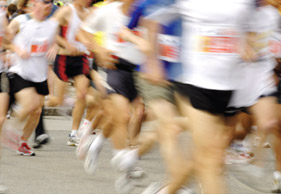
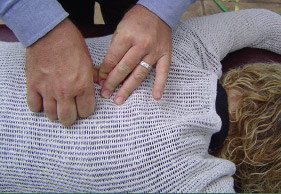
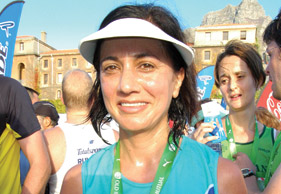
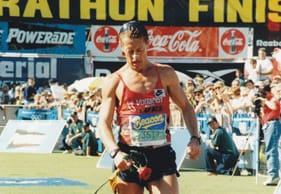
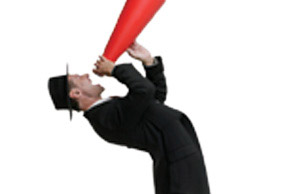
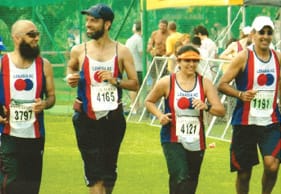
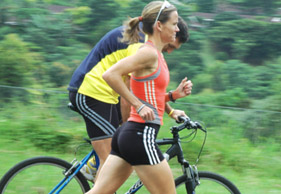
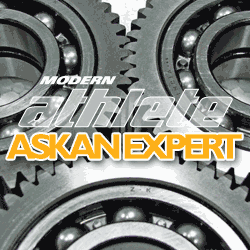
 Kathleen McQuaide-Little – Modern Athlete Expert
Kathleen McQuaide-Little – Modern Athlete Expert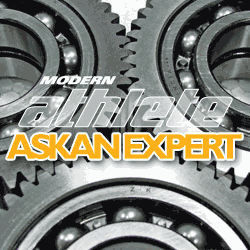
 Sean Falconer – Modern Athlete Editor & Gear writer
Sean Falconer – Modern Athlete Editor & Gear writer